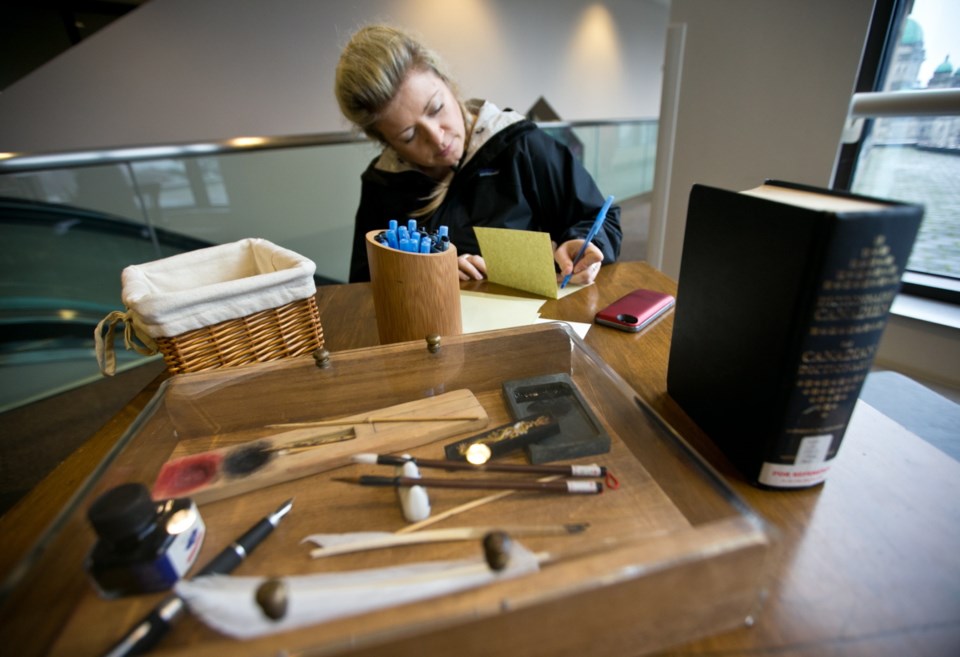Writing a letter to her Uncle Joe at the Royal B.C. Museum on Monday, Kristine Cooper couldn’t escape the very technology now endangering handwritten letters.
Cooper said she was taking part in the museum’s special Letter-Writing Week when her cellphone buzzed with a text message from a friend flying to Minneapolis. The friend, a nervous flyer, was asking for prayers after the plane encountered difficulties.
“Here I was, texting him while writing a letter,” said the Calgary woman. “It was a strange way to be multitasking.”
This week, museum visitors young and old are invited to write a personal letter to someone special, in an area set up with tables, comfy chairs, paper, pens and envelopes. The museum even promises to mail the letters and pay for the stamps if visitors seal and address the envelopes.
It may sound odd, said Kim Gough, adult learning team leader, but there is a link between letter-writing and the museum. “In our collection and archives, we have a lot of letters and diaries and documentations that are really a big part, an important part, of our collections.”
Just how rare the communication form has become was obvious Friday when one teenage boy sat down to write a letter and confessed it was something he had never done before. Gough said he had to be told to begin with “Dear So and So,” write a few pleasantries and sign off with “affectionately yours.”
“It just seems amazing to me that somebody doesn’t know how to do it,” said Gough. “It really is becoming a lost art.”
Gough said writing a letter by hand, rather than typing an email or sending a text, forces us to slow down and think a little more carefully about what we are saying and how we are saying it.
It may even start us thinking of how our own communication is changing, what might be disappearing and what might be gained.
“Is it going to be different in 50 years?” asked Gough. “Are we going to have preserved emails or blogs? Are we going to be able to access them? Are we going to be able to use them in the same way?”
Museum staff deliberately set up the letter-writing section next to a new exhibit devoted to B.C. First Nations languages, and how they communicate individual worldviews.
For example, when the Our Living Languages: First People’s Voices in B.C. exhibit first opened in June, one native speaker explained how his people had no word for “poverty.” Instead, they used a term literally translated as “unable to catch salmon,” demonstrating the importance of salmon to his people.
Letter-writing week runs from 11 a.m. to 2 p.m. until Jan. 9.
All you need to bring is the address of the person to whom you plan to send the letter. Who knows? It may one day end up preserved in the B.C. Archives.
Admission to the museum is by donation until Jan. 9.



